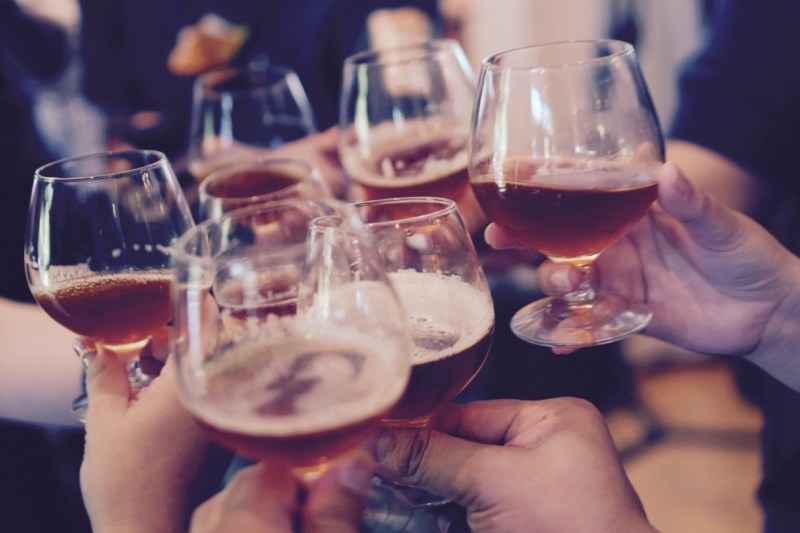The days of freewheeling breweries making whatever beer they could dream up might be gone. Since the pandemic, a number of long-standing producers have shut down. It seems craft brewers are exercising a bit more caution in what they’re turning out, paying close attention to changing tastes and new players.
Yet, craft beer keeps chugging along. While so many other sectors fluctuate, the number of breweries in the U.S. continues to rise. The total number of craft breweries in the nation is approaching 10,000 and rose again from 2022 to 2023, according to Beverage Daily. It’s just that the level of growth is beginning to taper off, which has some producers looking in the mirror.
The state of craft beer

Ellie Preslar is the chief commercial officer at Sierra Nevada Brewing Co. The California label has been at it since 1979 and a major part of launching the craft movement.
“Craft beer is in a time of increased competition from multiple angles,” Preslar said. “There are more beverages on shelves than ever before, giving consumers more choices with new categories that compete with beer like ready-to-drink canned cocktails, hard seltzers, and crossovers like familiar juice brands now available in spiked versions.”
Success, Preslar explained, is harder to come by now than 5 or 10 years ago and not only evolves with customers’ preferences, but offers compelling values. “Many of today’s consumers care about where their products come from, the quality, and how they are made. Those values are aligned with the ethos of craft beer, and for that reason, I believe craft beer as a segment has resiliency and staying power for the long haul.”
Sierra Nevada is optimistic, drawing on valuable history. “We’re optimistic for what the future holds because we are deeply committed to our consumers and to our craft that we’ve been honing for decades, and is now in its second generation of family ownership. We’re going to keep producing damn good beer, and I’m confident consumers are going to continue to seek out well-made, thoughtfully crafted products like ours.”
Keeping up with customers

“Today’s drinkers are savvy, knowledgeable and they like to explore a variety of flavors and beverage experiences,” Preslar said. “We’ve carved out a specific spot for ourselves within today’s beverage scene, and that’s with high-quality craft beer and hop-forward beverages like our sparkling hoppy water, Hop Splash.”
How do you do that? By listening to consumer feedback and paying attention to shifts in flavor preferences and drinking occasions. “We don’t produce new products in a vacuum and hope for the best, but rather, we work hard to align our mastery of brewing and commitment to high-quality ingredients with what consumers are looking for,” she told us.
Sierra Nevada’s Limited Hazy Series is a fine example, rewarding adventurous hazy fans with new hop combos and style varieties. Over at Ferment Brewing Co. in Hood River, Dan Peterson is the brewmaster. The brewery is relatively small, a 20-bbl operation making some truly wonderful beers. Peterson takes a one-of-a-kind approach to producing something people will gravitate toward.
“For each new recipe we develop, I like to visualize a glass of the finished beer in hand and ask myself what makes this different,” he said. “Like characters in a story, it is important for the finished beer to be unique. Once that image, flavor, and aroma are in mind, I will build it sort of by reverse-engineering the concept, pulling together ingredients and processes. For me the bridge that grows from concept to a spot on the tank schedule to a recipe on a brew sheet to a glass in hand is the magic. The hope is that folks are happy to drink it.”
The future

Craft beer is resilient and has proved as much over the years. “I would argue that one of the savviest business aspects of craft beer is the ability to be creative and authentic,” Preslar said. “Craft beer delivers a unique value proposition to consumers in that products are thoughtfully developed by masters of the art of brewing, and the most successful brands are working with high-quality ingredients, and not cutting corners so that consumers can feel great about how the product was made and where it came from.”
That means no compromises. Peterson reminded us that beer has been an ever-changing landscape since the beginning. He said brewers have embraced new approaches and ingredients since medieval times (kilning malts with indirect heat, brewing with lager yeast, using hops, etc.). But he thinks while the landscape has changed, people perhaps haven’t that much.
“At Ferment, we like to consider brewing traditions of the past and explore those styles with deeper roots,” he explained. “Brewing and tasting our recipes from our first year in operation, like White River Saison, Bière de Garde, ESB, and English Pale Ale, is like seeing an old friend. That being said though, there are some amazing flavor combinations available for us to work with these days, particularly with hops. By exploring, experimenting, and innovating, brewers now are able to create beers that have so much more fascinating complexity than what was available in decades and centuries past. But by trying new things, I don’t see us as straying from tradition as much as keeping the tradition of brewing alive.”
So long as brewers are careful and dial in their recipes, some kind of growth will likely continue to be the theme. But that’s going to require dealing with more competition than ever from the many other emerging categories out there, not to mention the NA and lower-ABV movements.
Keep up on all things craft beer with our features on craft beer terminology and the best fresh hop beers (it’s that time of year again). We’ve also got stories on pairing beer and cheese and our favorite craft beer books. Cheers!



